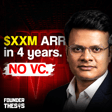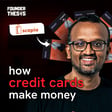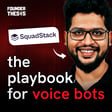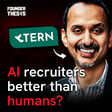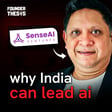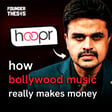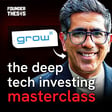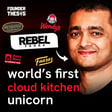
The Story Behind UPI, And What’s Next: ONDC, BBPS & ULI with Deepak Thakur (NPST)
"When UPI happened, it was like, very clear now, this is something that will change everything."
This powerful statement from Deepak Chand Thakur encapsulates the monumental shift the Unified Payments Interface has brought to India's financial landscape. It wasn't just another payment system; it was a revolution that reshaped commerce, financial access, and technological innovation —a revolution that Deepak and NPST have been at the heart of.
Deepak Chand Thakur is the Co-Founder and Chief Executive Officer (CEO) of Network People Services Technologies Ltd. (NPST). He has guided NPST from a bootstrapped startup to a publicly listed entity on the mainboards of the National Stock Exchange (NSE) and Bombay Stock Exchange (BSE). Under his leadership, NPST achieved FY24 revenues of ₹130.08 crore, a 216% year-on-year increase, and a net profit surging by 310% to ₹26.71 crore. The company's SME IPO in 2021, which Deepak recounts was valued at ₹50 crore, saw it deliver approximately 9000% returns to its early investors and reach a peak market capitalization of around ₹5000 crore.
Key Insights from the Conversation:
👉UPI's Genesis & Evolution: A deep dive into how UPI was conceived, its evolution from IMPS, and why it became a uniquely successful global model for digital payments.
👉NPST's Role in UPI: How NPST became a crucial technology service provider, bridging the gap between NPCI and banks to facilitate UPI adoption and build scalable solutions.
👉The Tech Behind Scale: Understanding the microservices architecture NPST employs to handle massive transaction volumes, like processing over 5.5 crore transactions daily for a single banking partner.
👉Innovation Beyond MDR: How the absence of Merchant Discount Rate (MDR) on UPI payments spurred innovation towards creating value-added services and new revenue models.
👉JAM Trinity's Impact: The foundational role of Jan Dhan-Aadhaar-Mobile (JAM) in creating the digital backbone that enabled UPI's widespread success in India.
👉Future of Payments: Exploring what's next after UPI, including digital currency (e₹), ONDC, and BBPS.
Chapters:
00:00:49 - Introduction: Deepak's Journey to Becoming a Fintech Founder
00:07:36 - Understanding NPCI and India's Early Payment Ecosystem
00:15:11 - NPST's Bootstrapping Strategy & Early Days Before UPI
00:22:33 - The UPI Revolution: Impact and NPST's Pivot
00:39:14 - Deep Dive: UPI Architecture, Evolution from IMPS & Global Uniqueness
01:07:07 - The Business of UPI: No MDR, Scarcity Driving Innovation
01:19:01 - UPI Going Global & The Foundational JAM Trinity
01:32:55 - Beyond UPI: Exploring BBPS, ONDC & Account Aggregators
01:53:31 - NPST's Business Model in the UPI Era: PPaaS & Value Creation
02:03:48 - The NPST IPO Journey: Fueled by Fintech Growth
02:14:37 - Life After IPO & The Future of Digital Payments in India
#UPI #FounderThesis #DigitalIndia #FintechIndia #PaymentsRevolution #NPCI #DigitalPayments #MakeInIndia #StartupIndia #TechInnovation #IndianFintech #Innovation #DigitalTransformation #PaymentGateway #Fintech
